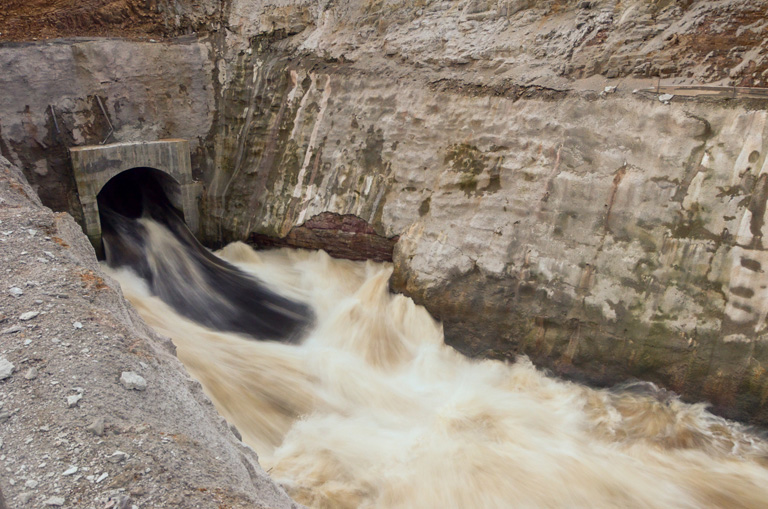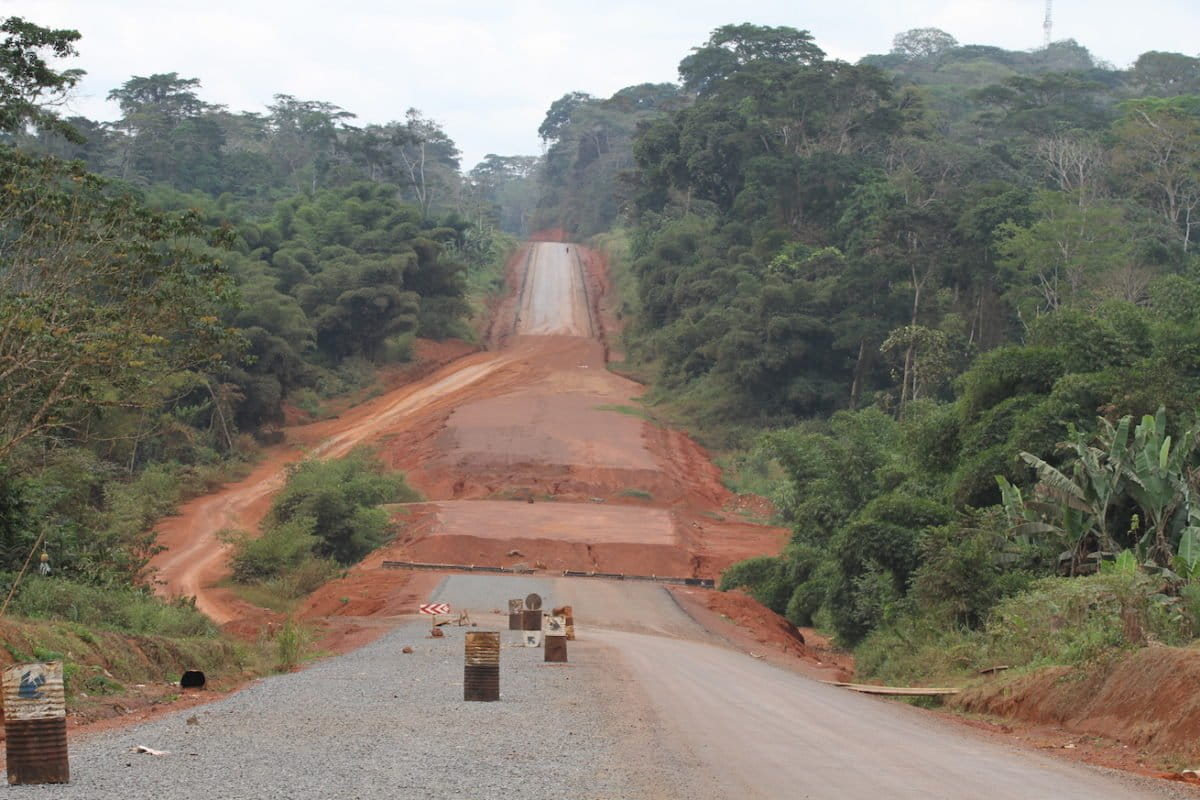Infrastructure projects in Congo Basin need greater oversight, report says
Nov 4, 2021
- A new report by Rainforest Foundation UK says that new transport and energy infrastructure projects in the Congo Basin do not adequately account for their full environmental and social impact and may lead to irreversible degradation of this vital forest region.
- RFUK is calling for regional governments and international lenders to take a more robust and transparent approach to managing the environmental impacts of infrastructure projects to ensure that needed development takes place in a sustainable way.
- The report says infrastructure projects often conflict with the goals of REDD+ projects, and their negative impacts are not properly accounted for.
- Denis Sonwa from the Center for International Forestry Research (CIFOR), who is unaffiliated with the RFUK report, says the REDD+ schemes add weight and legitimacy to the forest sector in negotiations over infrastructure projects.
How do you develop your economy and provide services in a sustainable manner? That’s a central theme of the U.N. climate summit underway in Glasgow, and in few places is the issue more acute than in the vast rainforests of the Congo Basin. A new report by Rainforest Foundation UK (RFUK) raises concerns that a raft of proposed and ongoing infrastructure projects in the region could have irreversible negative consequences for the forest and the communities that live in them.
“Few could deny that the Congo Basin needs development,” said Joe Eisen, executive director of RFUK and one of the authors of the report. “However, our research shows that infrastructure projects are subjected to little scrutiny and not always being driven in the interests of local and national populations.”
The Congo Basin spans 200 million hectares (500 million acres) across six countries: Cameroon, the Central African Republic, the Democratic Republic of Congo, the Republic of Congo, Equatorial Guinea, and Gabon. It is one of the largest and most important forested areas in the world, and compared to rainforests elsewhere, has suffered relatively low rates of deforestation.
This is in part due to the low levels of development in the region.
“You are speaking about a region where you really have a deficit of infrastructure, particularly in the transport and energy sectors,” said Denis Sonwa, a senior scientist with the Center for International Forestry Research (CIFOR) based in Cameroon, who is unconnected to the RFUK report.

Transport and energy are high on the agenda for governments across the Congo Basin. Improved roads or railways would lower costs of moving goods and people, provide rural communities with access to markets, and vastly improve access to services such as health care. Renewable energy projects, particularly hydropower, offer the promise of boosting GDP while also improving national security through self-sufficiency.
Any infrastructure project in pristine forest has an undeniable and direct environmental impact: trees cleared to make way for a railway, for instance, or areas flooded for new hydropower dams such as the 30,000 hectares (74,000 acres) of natural forest flooded for the creation of the Lom Pangar dam in Cameroon. But RFUK is focused on broader impacts that it says are not being properly accounted for in cost-benefit analyses and environmental impact assessments.
“Nearly all of the case studies covered in our report are likely to have major and probably irreversible impact on forests, and yet there is little evidence this has been seriously considered by policymakers,” Eisen said.
New roads that open up access to previously remote forest have led to increased deforestation, clearance for subsistence agriculture, and increased hunting for bushmeat and body parts in other forested areas. A study in the Amazon found that 95% of deforestation occurred within 5.5 kilometers (3.4 miles) of a road or 1 km (0.6 mi) from a navigable river. New infrastructure projects can also lead to an influx of new people into areas of previously low habitation, increasing pressure on the environment and causing numerous social issues for local people, particularly Indigenous groups.
RFUK says it’s concerned that the planning and development frameworks in the region are not robust enough to adequately assess and limit the environmental and social impacts of new infrastructure projects. Its report highlights eight case studies where it says impact assessments have failed to understand and mitigate the full impacts of the project; the examples also point to frequent failures to implement or monitor environmental or social management plans.
“It’s good that this report came to open eyes to the fact that infrastructure development is not only a technical issue of engineering and economics,” Sonwa said. “It allows an overview of the impact that infrastructure development, particularly new ones, can have on forest conservation.”
Increased deforestation following renovation of the Kisangani-Beni road as part of the World Bank-funded Pro-Routes infrastructure project in the Democratic Republic of Congo. RFUK says the project’s environmental monitoring and safeguards have been ineffective. Image/data sources — Before: Hansen/UMD/Google/USGS/NASA and Planet Imagery, After: Planet Imagery
The role of lenders
 Image courtesy IUCN/UNESCO. Rainforest Foundation UK says Cameroon’s Mékin dam illustrates many of their criticisms of infrastructure in the Congo Basin. This 15-megawatt hydropower dam and power line was promoted as a solution for limited and irregular power supply in southern Cameroon, with promises of provision of electricity to households in the dam’s immediate surroundings in Dja and Lobo districts. The dam’s environmental impact assessment said 4,500 hectares (11,100 acres) of forest would be cleared for the reservoir. According to RFUK, 26,850 hectares (66,350 acres) of forest were logged, including large areas outside the dam’s flood zone. Resettlement of affected households ran into difficulties, and Société Hydro-Mékin, the state-owned company set up to manage the dam’s construction, never filed a report on implementation of the project’s EIA and refused to respond to recommendations following environmental audits by government agencies. |
Big infrastructure costs big money. For the countries of the Congo Basin, this means looking for financing from organizations like the African Development Bank and the World Bank. Funding from these international agencies increasingly comes with safeguards and caveats intended to ensure that development projects don’t cause unintended environmental and social harm. But RFUK says monitoring and enforcement of these loan conditions isn’t strong enough.
“[The report] lays bare the failings of the traditional development partners such as the World Bank, who have consistently failed to uphold their own social and environmental safeguards,” Eisen said.
RFUK’s report also highlights that as well as infrastructure projects, the World Bank has committed funds to REDD+ projects in the region. The U.N.-backed REDD+ (reducing emissions from deforestation and forest degradation) is designed to reward developing nations for the global ecosystem service of carbon sequestration that their forests provide, so achieving development without needing to cut down their forests.
The RFUK report also says that while infrastructure projects are often under construction in the same places as REDD+ projects, sometimes even backed by the same funder, the REDD+ schemes seldom address the potential impact of infrastructure projects.
Eisen and his colleagues say the net result could be that infrastructure projects are counteracting the environmental benefit created by REDD+.

RFUK has been critical of REDD+ schemes in the region, viewing them as generally ineffective. Sonwa said he sees things slightly differently.
“We need to give more power to those who speak on social and environmental issues when projects are being put forward,” he said. “It’s good that the REDD+ dynamic is putting that on the table.”
Sonwa said the economic potential of REDD+ projects, which allow governments to earn revenue through protecting forests, gives a stronger voice to the forest sector in discussions with Central African leaders on the benefits of new infrastructure projects. This may be even more important in smaller, domestically funded projects, where the safeguards imposed by international lenders are not in place, or in the increasingly common projects funded by Chinese banks and companies where the environment is often a lower priority.
The report calls for stronger assessment of the cumulative impacts of current and future infrastructure projects, greater accountability and transparency in the planning and implementation process, and better coordination between the funding of infrastructure and REDD+ projects to ensure that REDD+ projects are genuinely effective.
Sonwa said he’s supportive of RFUK’s recommendations while also warning policymakers not to view development and the environment as a dichotomy, but to search for the synergies instead.
“This report allows the different stakeholders of the region to see how they can move toward a more integrative way of thinking,” he said, “where you have prosperity for the population but at the same time conserve the forest, or at least avoid the big negative impacts.”
In the Congo Basin, a road cuts through once-untouched ape wilderness
Citation
Barber, C. P., Cochrane, M. A., Souza Jr., C. M., & Laurance, W. F. (2014). Roads, deforestation, and the mitigating effect of protected areas in the Amazon. Biological Conservation, 177, 203-209. doi:10.1016/j.biocon.2014.07.004
Banner image: China-funded road-construction project in the Congo Basin. Image courtesy William Laurance.
FEEDBACK: Use this form to send a message to the author of this post. If you want to post a public comment, you can do that at the bottom of the page.